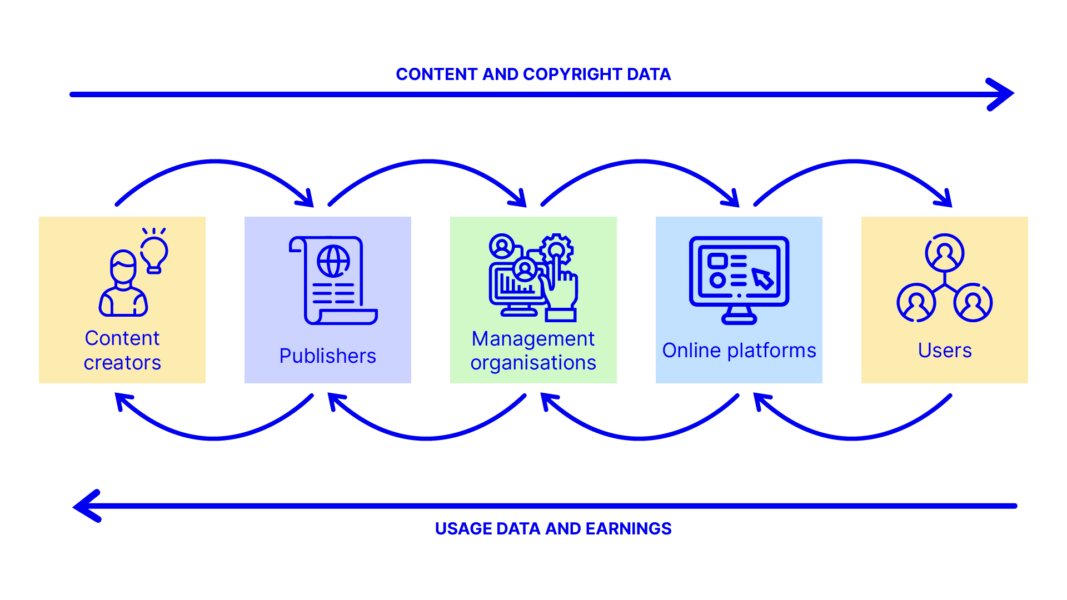Why?
Creators upload original content on a multitude of online platforms but are not systematically remunerated for their work. User-generated content is not generally protected. New legislations make the online platforms responsible, but the latter often lack the necessary information to fulfil their duties.
The digital media business amounts to €1,070 billion per year (PwC Global Entertainment & Media Outlooks 2019-2023 and 2021-2025), but this money is not split evenly. The slice of revenues taken by the retailers is too large, while the slice left to the producers is too small. All over the world, legislators are looking for ways to restore a fair balance.
What?
We believe that creators deserve fair, appropriate, proportionate, and transparent remuneration. To that end, marketplaces for digital media and rights data systems must allow stakeholders to easily tap into the flow of content, the counterflow of remuneration, and the important information that explains them.

How?
All stakeholders of the creative ecosystem should benefit from a distributed rights register that is independent from business models, sectors, and jurisdictions. Therefore, we are building an open framework that allows anyone to declare and search trusted rights data.
The rights data will be collected step by step as content flows from authors and performers to users in order to secure the counterflow of money from users to creators.
The management organisations, platforms and users will know who is who, what is what, who did what, who owns what, and what they can do with that. They will be able to rely on trusted data to licence, distribute, and remunerate digital media.
The declaration and search interfaces will encapsulate the knowledge on intellectual property and data management. Creators will focus on their arts; they will not need an MBA to get paid.

What does this mean for Estonia?
A national copyright infrastructure will secure the recovery, resilience, and growth of the Estonian creative industries, foster the Estonian culture, boost content-based education, and safeguard quality journalism.
It will strengthen the Estonian leadership in digital infrastructure, provide a safe haven to creative entrepreneurs, entice e-residents, and attract inward investments from producers and service providers.
Did you know?
- The creative industries are growing at more than 5 times the rate of the economy as a whole (Creative Industries Federation).
- There are an estimated 30,681 creative professionals in Estonia (Ministry of Culture) and 180 million globally.
- 1/3 of creative people works independently. 95% of creative businesses employ less than 10 people (Creative Industries Federation). They do not have access to the costly, expertise-hungry rights management systems of the major players.



